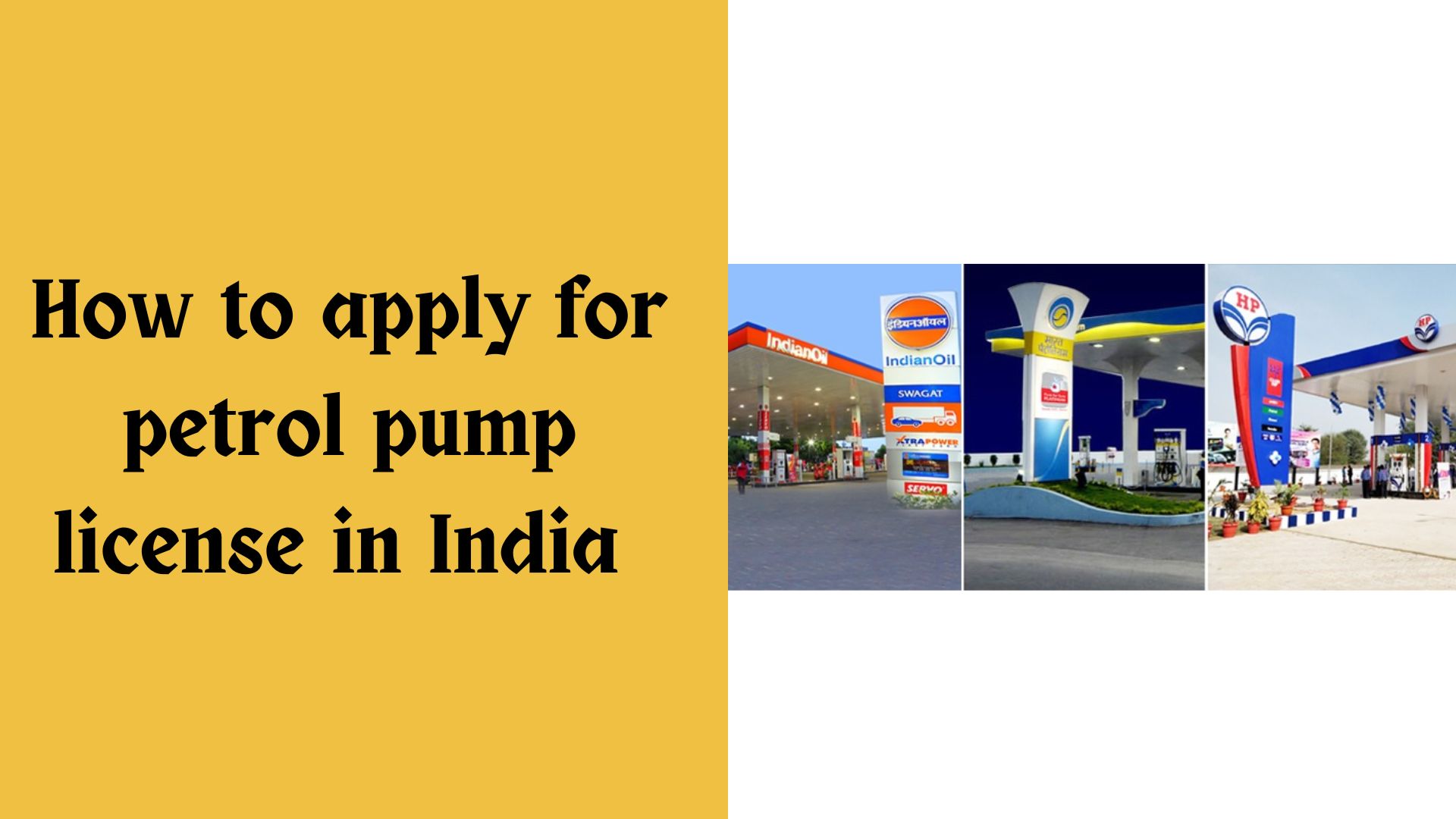Applying for a petrol pump license in India involves several
steps and requires compliance with numerous legal and procedural requirements.
This guide will provide a comprehensive overview of the process, including
eligibility criteria, documentation, and steps to successfully obtain a petrol
pump license.
Eligibility Criteria
Before applying for a petrol pump license, ensure that you
meet the following eligibility criteria:
1. Age: The applicant must be at least 21 years old and not
more than 55 years old.
2. Nationality: The applicant must be an Indian citizen.
3. Education: For rural areas, the applicant should have
passed at least the 10th standard. For urban areas, a minimum educational
qualification of 12th standard is required.
4. Financial Capability: The applicant should have the
financial capacity to invest in the petrol pump. This includes the cost of
land, infrastructure, and working capital.
5. Land Requirement: The applicant should have a suitable
piece of land either by ownership or lease agreement. The land should meet the
specifications and guidelines provided by the oil companies.
Selection Process
The selection of petrol pump dealers is typically done
through an open advertisement by oil marketing companies (OMCs) such as Indian
Oil Corporation (IOC), Bharat Petroleum Corporation Limited (BPCL), and
Hindustan Petroleum Corporation Limited (HPCL). Here’s how you can apply:
1. Advertisement: Keep an eye on advertisements in
newspapers and the official websites of OMCs. These advertisements provide
details about the location, type of dealership (regular or rural), and other
relevant criteria.
2. Application Form: Purchase the application form from the
respective OMC’s regional office or download it from their official website.
The cost of the application form can vary.
3. Filling the Form: Fill in the application form carefully,
providing all necessary details and attaching required documents. Incomplete or
incorrect forms may lead to disqualification.
4. Submission: Submit the completed application form along
with the application fee to the designated office within the stipulated
deadline.
Documentation required for apply petrol pump license in India
Here is a list of documents typically required when applying
for a petrol pump license:
1. Identity Proof: Aadhaar card, PAN card, voter ID, or
passport.
2. Address Proof: Ration card, electricity bill, telephone
bill, or bank statement.
3. Educational Qualification: Certificates and mark sheets.
4. Financial Documents: Bank statements, income tax returns,
and proof of funds.
5. Land Documents: Ownership documents, lease agreement, or
consent letter from the landowner.
6. Photographs: Recent passport-sized photographs of the
applicant.
Land Evaluation
Once your application is submitted, the OMC will evaluate
the land you have proposed. The land must meet specific criteria, including:
1. Location: The land should be in a commercially viable
area with good visibility and easy accessibility.
2. Size: The minimum size of the plot should be as specified
in the advertisement, usually around 800-1000 square meters for regular
dealerships.
3. Environmental Clearance: The land should not be in
environmentally sensitive areas. Necessary environmental clearances must be
obtained.
4. Zoning Laws: The land should comply with local zoning
laws and regulations.
Interview and Evaluation
If your application and land are found suitable, you will be
called for an interview. The interview process typically involves:
1. Personal Interview: This assesses the applicant’s
background, financial capability, and business acumen.
2. Field Verification: The OMC may conduct a field
verification of the land and documents submitted.
3. Marks Allocation: Applicants are evaluated and given
marks based on various criteria like land suitability, financial capability,
and educational qualifications.
Letter of Intent (LOI)
Successful applicants receive a Letter of Intent (LOI) from
the OMC. The LOI is an offer to set up the petrol pump, subject to fulfilling
certain conditions within a specified period. These conditions may include:
1. Land Development: Developing the land as per the
guidelines provided by the OMC.
2. NOC: Obtaining a No Objection Certificate (NOC) from the
District Magistrate or other competent authorities.
3. Approvals and Permits: Securing approvals from various
departments such as fire safety, pollution control, and municipal authorities.
4. Financial Arrangements: Arranging the required funds for
setting up the petrol pump.
Setting Up the Petrol Pump
Once the LOI conditions are fulfilled, the OMC will provide
assistance in setting up the petrol pump. This includes:
1. Construction: Constructing the petrol pump infrastructure
including fuel storage tanks, dispensing units, office space, and amenities.
2. Equipment Installation: Installing necessary equipment
such as fuel dispensers, underground storage tanks, and safety systems.
3. Branding and Marketing: Branding the petrol pump with the
OMC’s signage and marketing materials.
4. Training: Providing training to the staff on the
operation of the petrol pump, safety procedures, and customer service.
Inauguration and Operation
After the construction and installation of equipment, the
petrol pump is ready for inauguration. The OMC will inspect the site to ensure
all standards are met. Upon successful inspection, the petrol pump is
officially inaugurated and can commence operations.
Conclusion
Obtaining a petrol pump license in India is a meticulous
process involving various steps from application to operationalization. It
requires thorough planning, financial investment, and adherence to regulatory
guidelines. By following the detailed procedure outlined above, prospective
applicants can navigate the process effectively and embark on a successful
venture in the fuel retail industry.

